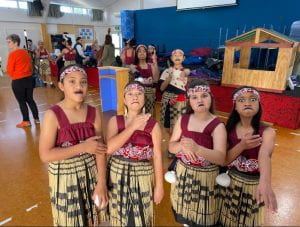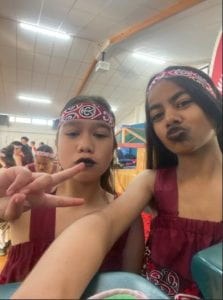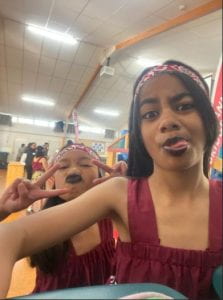This week for Miss Tele’a writing group we learned about how to create a suspenseful beginning through imagery and dialogue.
Suspenseful means creating a feeling of excitement and uncertainty about what will happen next.
Imagery means using descriptive language to create vivid mental picture or sensory experiences.
Dialogue is a conversation between characters in a story or play. It helps reveal information, develop characters, and move the plot forward.
First, we had to discuss in a group what suspenseful means. Suspenseful means creating a feeling of excitement and uncertainty about what will happen next.
Next, Miss Tele’a showed us 2 different videos to watch, and we had to think what those videos has in common and the same thing. The first video was about a man at space jumping off at space. The second video was about one girl and one boy getting scared because there were 2 dinosaurs that were dangerous, and they tried to hide until they got caught from it and got chased.
After, we finished watching the movie Miss Tele’a gave us a whiteboard each for our teammate to figure out what the video has in common and the same thing. I said “They were going to die” because in the first video the person jumped off from space, they could have died and for the second video they were going to die because the 2 dinosaurs started to chase them which was scary. Vaingalo said “They almost got caught”.
Then, Miss Tele’a read out a story for us to imagery and write down what I could we could hear, see, feel, smell, taste, think. The story said “Wind howled through the night, carrying a scent that would change the world. A tall Shade lifted his head and sniffed the air. He looked human except for his crimson hair and maroon eyes. He blinked in surprise. The message had been correct: they were here. Or was it a trap? He weighed the odds, then said icily, “Spread out; hide behind trees and bushes. Stop whoever is coming . . . or die.”
We also had to imagine & write your own beginning. For example: The weather condition will be rain and wind – crashing and howling. Smell will be Air – coming in my nose Fresh,frosty,wind.
Lastly, we had to write down our own story by using our notes we were planning. For my story I said “The rain and wind crashed through the night carrying a smell of air that would change the world. A girl named Olivia lifted her head and opening her eyes. She looked like a human except for her maroon eyes and black hair. She blinked in surprise. The message had been correct: they were here. Or Am I going to die? He weighed the odds, then said “Come over here” “Okay I’m coming”.
I enjoyed doing this task about suspenseful. I did well at explaining what suspenseful mean. I need to improve on adding more details into my story I made.
This is my google slide (work) I made!


